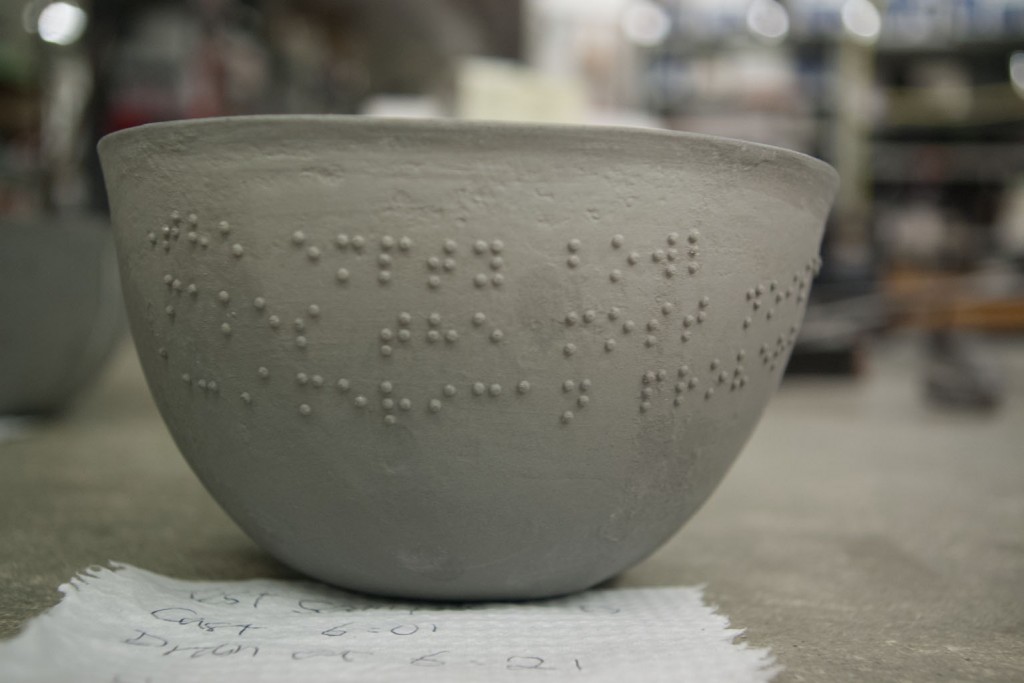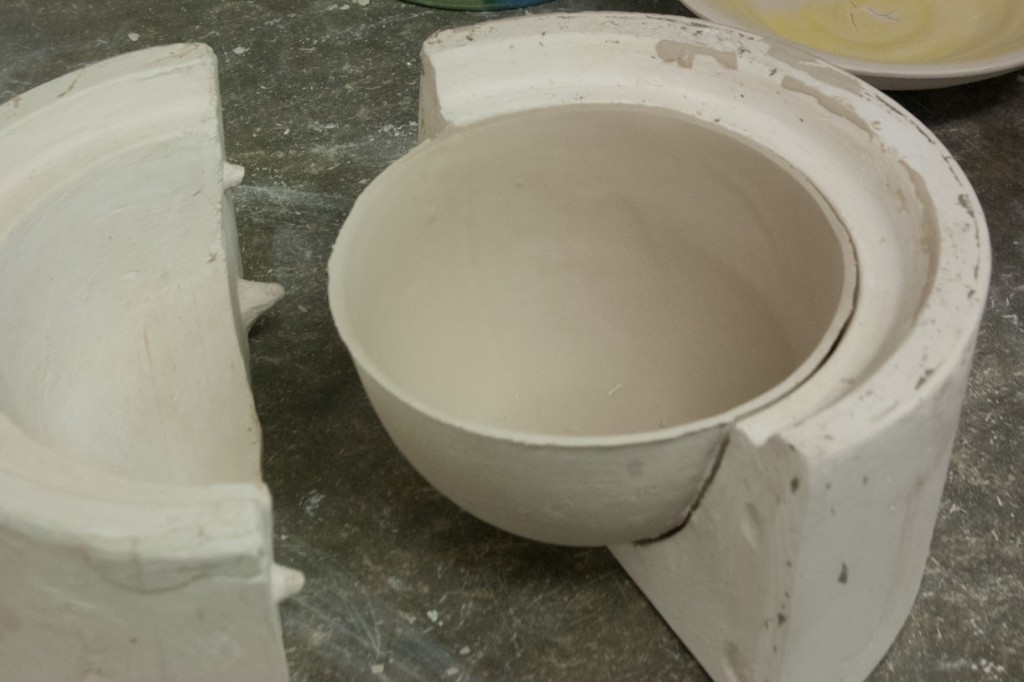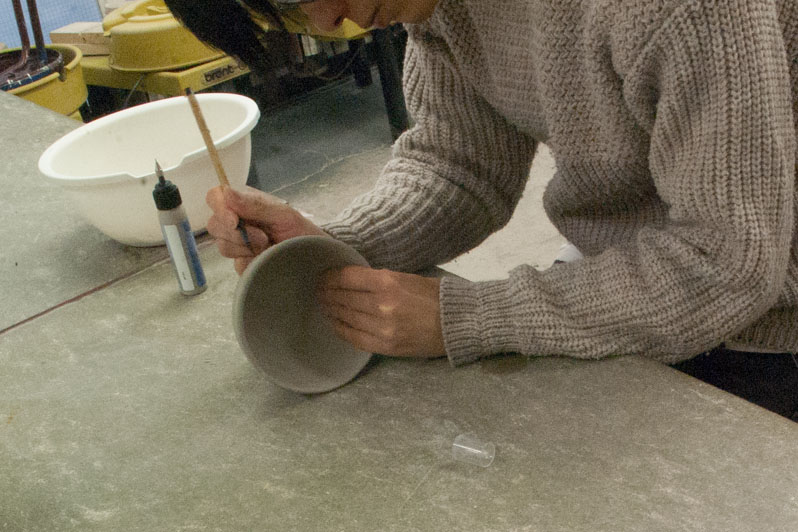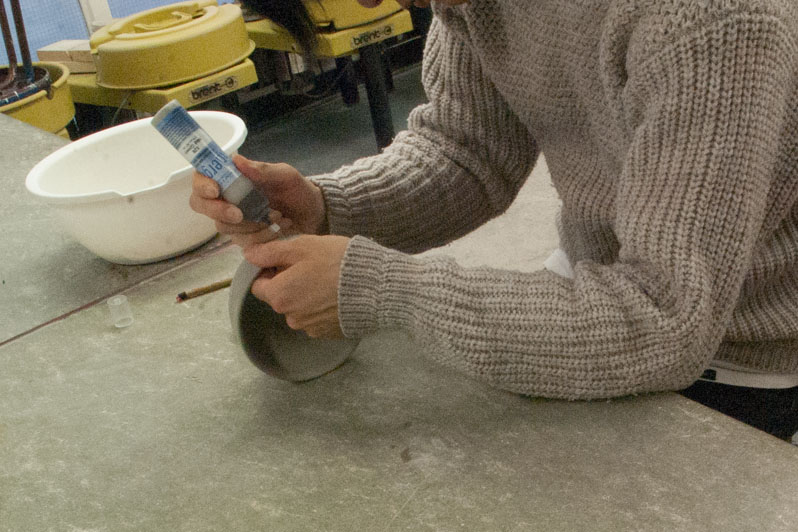Brailling

The braille on the bowls was created through a two-step process: A preliminary brailled form is first cast using a plaster mould with the braille carved using a drill bit. After the form had firmed up and seam lines removed and smoothed out, a wet brush is run over the braille part of the cast to remove any detached dots; the missing dots were then repaired using a slip trailer.
In principle, casting a perfect brailled form with just the mould should be possible, and indeed the first casts were more or less perfectly formed. So the fact that repairs were later needed suggests that either my mouldmaking or my slipcasting processes were defective. Unfortunately, with the time frame that I had to work within, I did not have enough time to find out the actual cause to fix it.
Any necessary repairs were done by re-creating the missing dots with a slip trailer. Because of the small dot size, a fine-nozzled metal tip needs to be attached to the slip trailer so that small dots can be created.
After the bowl had dried sufficiently they were loaded into a kiln for a low-temperature bisque firing.


